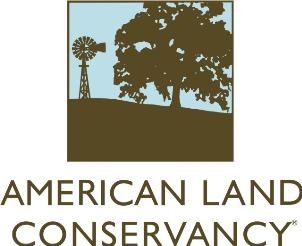Related Research Articles

In the United States, a conservation easement is a power invested in a qualified private land conservation organization or government to constrain, as to a specified land area, the exercise of rights otherwise held by a landowner so as to achieve certain conservation purposes. It is an interest in real property established by agreement between a landowner and land trust or unit of government. The conservation easement "runs with the land", meaning it is applicable to both present and future owners of the land. The grant of conservation easement, as with any real property interest, is part of the chain of title for the property and is normally recorded in local land records.
Protected areas of Tasmania consist of protected areas located within Tasmania and its immediate onshore waters, including Macquarie Island. It includes areas of crown land managed by Tasmanian Government agencies as well as private reserves. As of 2016, 52% of Tasmania's land area has some form of reservation classification, the majority is managed by the Tasmania Parks & Wildlife Service. Marine protected areas cover about 7.9% of state waters.
Land trusts are nonprofit organizations which own and manage land, and sometimes waters. There are three common types of land trust, distinguished from one another by the ways in which they are legally structured and by the purposes for which they are organized and operated:
The Forest Legacy Program was established in the 1990 United States farm bill to protect environmentally important forest lands that are threatened by conversion to nonforest uses. It provides federal funding for conservation easements and fee simple purchases.
Open Space Institute (OSI) is a conservation organization that seeks to preserve scenic, natural and historic landscapes for public enjoyment, conserve habitats while sustaining community character, and help protect the environment. OSI uses policy initiatives and ground-level activism to help accomplish its goals.

The mission of American Land Conservancy is to conserve land for the benefit of people and wildlife.

The Northeast Wilderness Trust is a non-profit conservation organization based in Montpelier, Vermont working to preserve and restore forest landscapes in Maine, New Hampshire, Vermont, New York, Massachusetts, and Connecticut. Its mission is to conserve forever-wild landscapes for nature and people.

The Wapack Wilderness is a 1,400-acre (6 km2) tract of forest in the towns of Rindge and New Ipswich, New Hampshire. The land is owned by the Hampshire Country School, a small, private school for students who do not thrive in traditional settings. It abuts Binney Pond Natural Area and land conserved by the New England Forestry Foundation. Watatic Mountain Wildlife Area is two miles (3 km) to the southeast, and Annett State Forest is two miles (3 km) to the northeast. The headwaters of the Millers River flow from the area, feeding into Converse Meadows and Lake Monomonac before entering Massachusetts.
Private landowner assistance program (PLAP) is a class of government assistance program available throughout the U.S. for landowners interested in maintaining, developing, improving and protecting wildlife on their property. Each state provides various programs that assist landowners in agriculture, forestry and conserving wildlife habitat. This helps landowners in the practice of good land stewardship and provides multiple benefits to the environment. Some states offer technical assistance which includes:

Woodland Stewards, Inc. is a conservation land trust in the United States whose mission is to assist landowners with land protection efforts. When landowners in the Coos, Grafton or Carroll counties of New Hampshire wish to protect their land, Woodland Stewards can accept the land or conservation easement donation. These methods guarantee that any protective measures remain in effect forever.
Conserving Carolina is a non-profit conservation organization working to preserve water and land resources in Western North Carolina. Conserving Carolina was created in July 2017, from a merger of two previously-separate organizations, Carolina Mountain Land Conservancy and Pacolet Area Conservancy. The combined organization maintains a primary office in Hendersonville, NC and a regional office in Columbus, NC.

The Hawaii Land Trust (HILT) is a non-profit organization established in Hawaii to “protect the lands that sustain us for current and future generations". The organization works with landowners to protect important areas by restricting commercial or other development. This protection is provided either by the landowner accepting a conservation easement on the land or by selling the land to HILT. As of 2018, the organization protected more than 18,000 acres (7,300 ha) across the state.
Joshua's Tract Conservation and Historic Trust, or Joshua's Trust, is a non-profit 501(c)(3) land trust operating in northeast Connecticut. Joshua's Trust was incorporated in 1966 to help conserve property of significant natural or historic interest. As of 2011, the Trust protects more than 4,000 acres, maintains trails that are open to the public, holds educational outreach programs, and publishes the Joshua's Tract Walkbook.
Preservation development is a model of real-estate development that addresses farmland preservation. It shares many attributes with conservation development, with the addition of strategies for maintaining and operating productive agriculture and silviculture, often in perpetuity. A preservation development is a planned community that allows limited, carefully designed development on a working farm, while placing the majority of productive land under a system of easements and community governance to ensure a continuity of farming and environmental stewardship.
The Emily & Theodore Hope Forest is a 376-acre (152 ha) permanent forest reservation located in Danbury, New Hampshire.
The Columbia Land Conservancy is an environmental nonprofit organization and land trust located in Columbia County, New York in the greater Hudson Valley. Its mission is to conserve farmland, forests, wildlife habitat, and rural character of Columbia County, connecting people to the land.
The North Branch Land Trust is a conservation easement group that aims to buy the developing rights to land in the Back Mountain area of the Northeastern part of Pennsylvania. The North Branch Land Trust was established in 1993 and has grown from one conserved property a year to over 12,000 acres of conserved land. The watersheds affected by the NBLT are the Susquehanna River and Delaware River watersheds.
Pacific Forest Trust is an accredited non-profit conservation land trust that advances forest conservation and stewardship solutions. Its mission is to sustain America’s forests for their public benefits of wood, water, wildlife, and people’s wellbeing, in cooperation with landowners and communities.

The Big Sur Land Trust is a private 501(c)(3) non-profit located in Monterey, California, that has played an instrumental role in preserving land in California's Big Sur and Central Coast regions. The trust was the first to conceive of and use the "conservation buyer" method in 1989 by partnering with government and developers to offer tax benefits as an inducement to sell land at below-market rates. As of 2016, it has protected around 40,000 acres (16,187 ha) through acquisition and resale to government agencies. It has added conservation easements to another 17,000 acres (6,880 ha) and has retained ownership of a number of parcels totaling about 4,500 acres (1,821 ha).

The McArthur Lake Wildlife Corridor (MLWC) is a wildlife corridor in northern Idaho, United States. It links the wilderness areas of the Selkirk and Cabinet mountains, and is used by species such as grizzly bears that move between these areas. It also provides a wintering area for deer and other ungulates. A highway and two railway lines run through the corridor, with a strip of side roads, buildings and fences along the highway. The highway section running through the corridor has high rates of vehicle collisions with wildlife. There is limited opportunity for creating safe wildlife crossings due to the difficult terrain. Conservation groups have been active in obtaining easements on timber land to prevent further development in the corridor while allowing sustainable forestry.
References
- ↑ "Society for the Protection of NH Forests". The Conservation Alliance. Retrieved 5 April 2018.
- ↑ Christopher Johnson; David Govatski (4 March 2013). Forests for the People: The Story of America's Eastern National Forests. Island Press. p. 87. ISBN 978-1-61091-215-0.
- ↑ Michael Lewis (8 March 2007). American Wilderness: A New History. Oxford University Press. p. 156. ISBN 978-0-19-803882-5.
- ↑ "SPNHF Properties". The Rocks. Retrieved 5 April 2018.
- ↑ "Bretzfelder Memorial Park". The Rocks. Retrieved 5 April 2018.
- ↑ Forest Society: About Us
- ↑ Saving Special Places
- ↑ A New Hampshire Everlasting and Unfallen. Society for the Protection of New Hampshire Forests. 1969.
- ↑ "Guide to the Society for the Protection of New Hampshire Forests Papers (part 1), 1868-2000". University of New Hampshire. Retrieved 5 April 2018.
- ↑ "How We Protect Land" . Retrieved 5 May 2022.
- ↑ "Land Conservation" . Retrieved 5 May 2022.
- ↑ "Conserving Your Land" . Retrieved 5 May 2022.